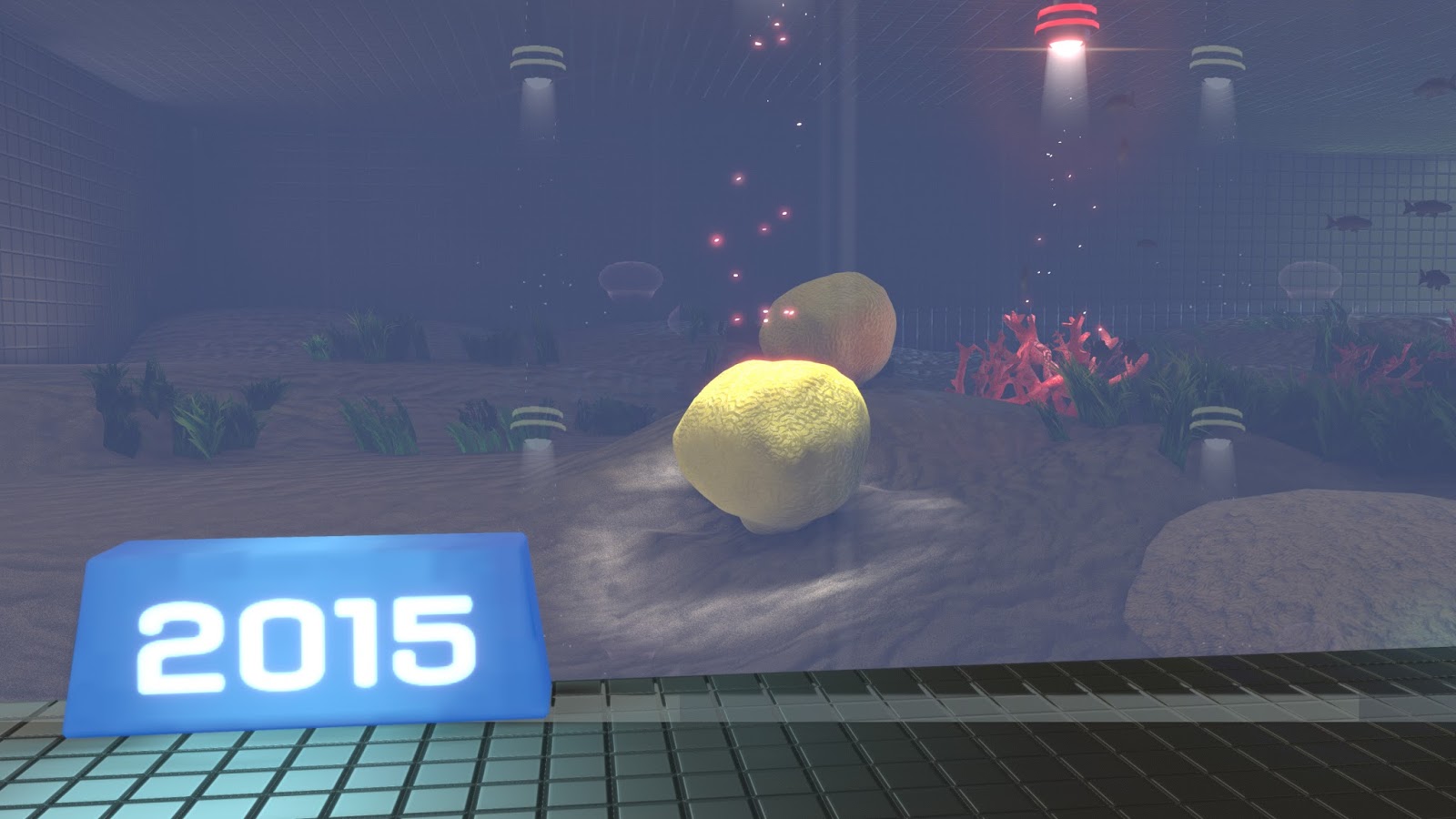The game was made in UDK using DirectX 9 technologies and runs through visual scripting in Kismet. Meng Wang was responsible for most of the complex models used (corals, sponges, rocks, dolphin, crab, and shark). I was responsible for all the other models (the lighthouse, most grass and seaweed, some rocks, the turtle, the brittle star, the laboratory, and all other incidental models). We used free textures when available, and I made textures and graphics in Photoshop as necessary. I was responsible for all material authoring, which included the vertex paint on the lighthouse, the transmission effect on sponges, wind vertex displacement, animation using vertex displacement, and a setup that mimics physically based reflections using scene captures and blurring/brightening by falloff in DX 9. I was also responsible for the music, sound effects, setdressing, Kismet visual scripting for gameplay, cinematics, animation, visual effects (including the particle effects, gameplay effect elements, post processing, and HUD effects), optimization, and graphics. I made most of the sound effects and all of the music in Mulab 5 with the Miroslav Philhamronic Orchestra.
Version 1.0.0 Kismet scripting code for the majority of the project (code for the aquarium is held in a different file). Makes use of remote events, state switches, failsafes, and resets while preventing bugs as much as possible. None of the code uses spinlocks, so it runs quickly, reliably, and very efficiently without much trouble. Some effects are controlled in Materials, or with the case of the doppler sonar, the sound cues.
This material uses vertex animation: smoother and more accurate than bone/vertex animation, and is much cheaper to render. It uses sine waves to generate the bobbing and flapping movement. This setup supports a dynamic speed based on vertical world position that speeds up or slows down the flapping motion as the turtle is moved higher or lower in the space. This gives a nice gliding or swimming stroke effect automatically as the turtle rises and falls with the basic Matinee animation. The material also supports weights by a creative use of a separate UV sheet to give the shell complete hardness, the front fins more flowing motion, and a harder cranium with a softer neck. All the animals in this project use vertex animation including Jellyfish, Dolphins, Sharks, and they are all static actors without any skeletons.














